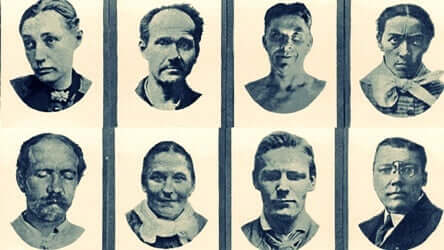One of the most curious projective tests in the history of psychology is undoubtedly Szondi’s test. Also known as the “analysis of human destiny”, it was created in 1935 to obtain information about people’s personality and deeper instincts.
Its technique is very simple: the patient must choose a face according to the questions that are asked.
- First of all.
- It is worth mentioning once again that this test currently has no scientific validity.
- Is based on non-target genetic predeterminism.
- But continues to be applied in certain contexts.
Some prison professionals or psychiatric facilities find it useful, as long as it is complemented by other more standardized diagnostic tests.
The basis of this tool is the idea that many of the choices we make are linked to certain repressed processes, with dimensions that we choose to hide in childhood. Knowing this, we can already imagine that this test is based on Sigmund Freud’s theory of instincts.
Leopold Szondi, the creator, was a renowned Hungarian psychoanalyst, as well as a psychopathologist and professor of psychology, who for almost ten years was up to Freud and Carl Jung himself.
All his work was severely interrupted during World War II, when he and his family were taken by the Nazis to a concentration camp. Fortunately, American intellectuals discovered their fate and decided to pay the Germans for their release.
However, after this experience, Szondi was unable to resume his work in the same way, and his goal of becoming a great representative in the field of psychodynamic theories lost strength.
However, many appreciate his best-known scientific achievement: the theory of the psychology of fate, as well as his proof. In addition, the Szondi International Society continues to exist today, which aims to disseminate the theories and teachings of the psychoanalyst.
“There is no science to discover the artifices of the mind through the appearance of the face. “William Shakespeare.
The Szondi test uses photography as a diagnostic method; in this test, patients should choose a face based on a question.
Something important is worth mentioning: this test uses 48 tokens organized into 6 sets of 8 people, plus all the photographs used are from people with mental disorders.
As a result, Szondi based on the idea that each patient would choose images whose facial expressions or traits showed a disorder or problem similar to their own, i. e. repressed impulses would occur during a specific choice for each question. asked by the therapist.
It was assumed (based on this theoretical context) that each patient would issue a reaction to these physical (and therefore genetic) characteristics shared with the image.
This phenomenon is called genotropism and arises from the theories left to us by Szondi himself about the psychology of human destiny.
Leopold Szondi initially sought a third way between sigmund Freud and Carl Jung’s approaches, thus, while the former defended the individual unconscious and Carl Jung the collective unconscious, Szondi defined a new option: the family unconscious.
The core of his theory was based on the following
The Szondi test is, according to this approach, the first step towards this realization.
The Szondi test may be applied to children over 5 years of age and adults individually or in groups.
The methodology is simple. The patient is asked questions such as: which of these people would he travel with, whose friend would he be?Which of these people do you find the most understanding and the most hostile?
Cards with eight photos are then displayed. The patient should give a quick response, so it is not allowed to think much.
Originally, as we said, all the images were of people with mental disorders, so the choices could give a clue to the deepest instincts of each patient, those with whom he unconsciously identifies.
In addition, Szondi has defined a number of units on which it would be possible to measure the choices made by patients:
We insist once again on one obvious aspect: the Szondi test was created in 1935, lacks scientific validity and the main criticism is its generalistic and deterministic approach.
A study carried out by the University of Marseille, for example, showed that, although this test was common in the field of psychiatry, from the 1980s it began to fall into disuse.
However, it is worth noting another detail. Today, there is a much more practical alternative to the Szondi test: marketing and advertising companies are replacing images of people with mental disorders to include other dimensions to measure consumer tastes, preferences, or purchasing impulses.
Today, the unsettling faces of the early twentieth century have been replaced by people who perform activities, colors, animals or food.
The theory of the familiar unconscious has been left behind to explore other simpler, non-pathological and neuromarketing dynamics.

